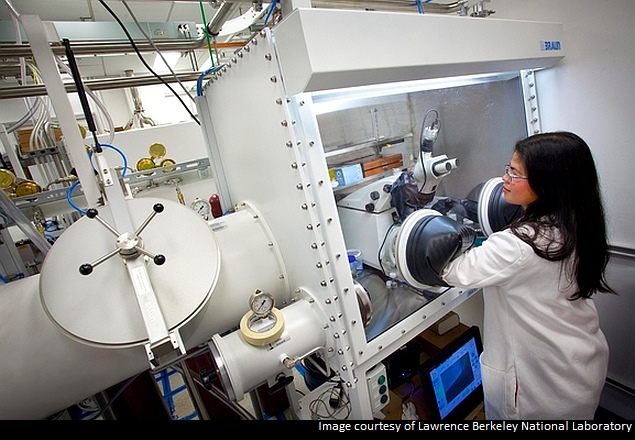- Home
- Others
- Others News
- New electrode scanning technique promises advances in battery technology
New electrode scanning technique promises advances in battery technology

US researchers developed a way to microscopically view battery electrodes while they are bathed in wet electrolytes, mimicking realistic conditions inside actual batteries.
While life sciences researchers regularly use transmission electron microscopy to study wet environments, this time scientists have applied it successfully to rechargeable battery research.
The results are good news for scientists studying battery materials under dry conditions.
The work showed that many aspects can be studied under dry conditions, which are much easier to use.
However, wet conditions are needed to study the hard-to-find solid electrolyte interphase layer, a coating that accumulates on the electrode's surface and dramatically influences battery performance.
"The liquid cell gave us global information about how the electrodes behave in a battery environment," said materials scientist Chongmin Wang from the US Department of Energy's Pacific Northwest National Laboratory.
"And it will help us find the solid electrolyte layer. It has been hard to directly visualise in sufficient detail," Wang said.
Wang and colleagues used high-powered microscopes to watch how the ebbing and flowing of positively charged ions deform electrodes.
Squeezing into the electrode's pores makes the electrodes swell, and repeated use can wear them down.
But up to this point, the transmission electron microscopes have only been able to accommodate dry battery cells, which researchers refer to as open cells.
In a real battery, electrodes are bathed in liquid electrolytes that provide an environment ions can easily move through.
So, working with colleagues from Joint Centre for Energy Storage Research (JCESR), Wang developed a wet battery cell in a transmission electron microscope.
The team built a battery so small that several could fit on a dime. The battery had one silicon electrode and one lithium metal electrode, both contained in a bath of electrolyte.
When the team charged the battery, they saw the silicon electrode swell, as expected. However, under dry conditions, the electrode is attached at one end to the lithium source - and swelling starts at just one end as the ions push their way in, creating a leading edge.
In the study's liquid cell, lithium could enter the silicon anywhere along the electrode's length. The electrode swelled all along its length at the same time.
"The electrode got fatter and fatter uniformly. This is how it would happen inside a battery."
For the latest tech news and reviews, follow Gadgets 360 on X, Facebook, WhatsApp, Threads and Google News. For the latest videos on gadgets and tech, subscribe to our YouTube channel. If you want to know everything about top influencers, follow our in-house Who'sThat360 on Instagram and YouTube.
Related Stories
- Samsung Galaxy Unpacked 2025
- ChatGPT
- Redmi Note 14 Pro+
- iPhone 16
- Apple Vision Pro
- Oneplus 12
- OnePlus Nord CE 3 Lite 5G
- iPhone 13
- Xiaomi 14 Pro
- Oppo Find N3
- Tecno Spark Go (2023)
- Realme V30
- Best Phones Under 25000
- Samsung Galaxy S24 Series
- Cryptocurrency
- iQoo 12
- Samsung Galaxy S24 Ultra
- Giottus
- Samsung Galaxy Z Flip 5
- Apple 'Scary Fast'
- Housefull 5
- GoPro Hero 12 Black Review
- Invincible Season 2
- JioGlass
- HD Ready TV
- Laptop Under 50000
- Smartwatch Under 10000
- Latest Mobile Phones
- Compare Phones
- Poco F7 Ultra
- Poco F7 Pro
- Samsung Galaxy M05
- Vivo Y39 5G
- Samsung Galaxy M06 5G
- Samsung Galaxy M16 5G
- Infinix Note 50X 5G
- Lava Shark
- Acer TravelLite (2025)
- Asus Zenbook 14 (2025)
- Honor Pad X9a
- Lenovo Idea Tab Pro
- boAt Storm Infinity
- Itel Unicorn Max
- Haier M95E
- Sony 65 Inches Ultra HD (4K) LED Smart TV (KD-65X74L)
- Sony PlayStation 5 Pro
- Sony PlayStation 5 Slim Digital Edition
- Blue Star 1.5 Ton 3 Star Inverter Split AC (IC318DNUHC)
- Blue Star 1.5 Ton 3 Star Inverter Split AC (IA318VKU)

















